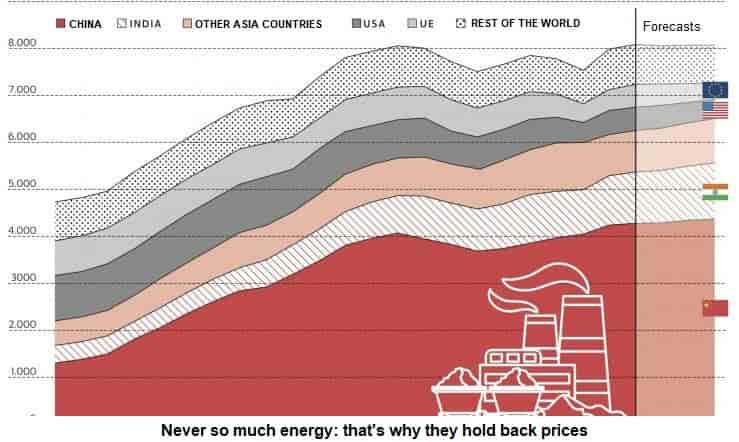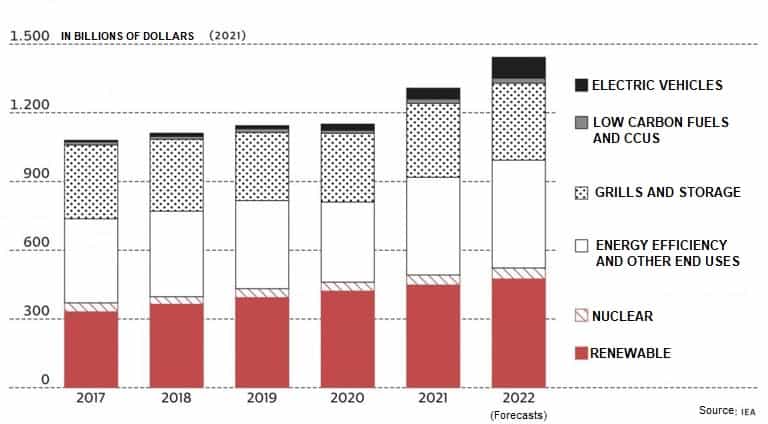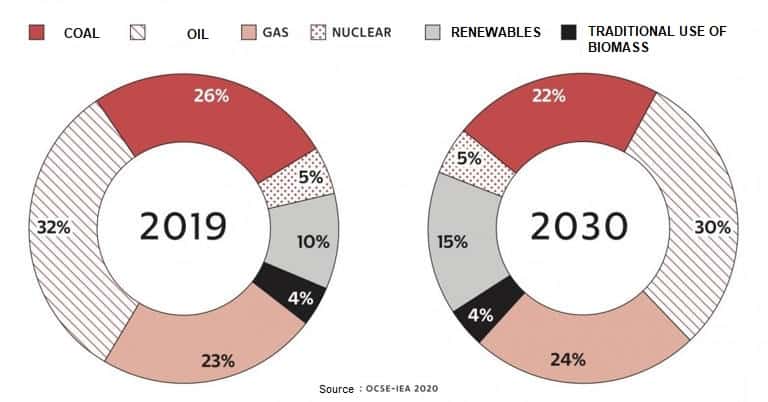Never so much energy 14-02-2023 - Arhive
Never so much energy
-Never so much energy: that’s why they hold back prices
“Britain’s last coal mine closes, historic era ends”. So headlined all the world’s newspapers at the end of December 2015. Only seven years later, the planet seems to rotate upside down: two months ago, His Majesty’s government has authorized the opening of the first coal mine for three decades now: a new deposit rich in “coke” which will be used not so much for power plants, but to produce “cheap” energy, destined for mostly to the boilers of the United Kingdom’s steel mills. It is the most sensational of the contradictions that emerged with the crisis caused by Vladimir Putin’s attack on Ukraine. What is it about? Despite the shortage of Russian gas supplies, particularly to the Europe, the world has never had so much availability of energy sources as in the last year.

Scenery changes Never so much energy
The phenomenon, moreover, can be explained by lining up the facts. The Western world, an ally of Kiev, has begun to give up the fossil raw materials it has purchased for years – often at very affordable prices – from companies controlled by the Kremlin. And when it hasn’t cut purchases or sanctioned Vladimir Putin’s regime with various embargoes, it has also forced the rest of the world to buy Moscow’s products at “calmed” prices. This has caused an excess demand for gas, oil, but also coal to replace the fossil raw material from companies controlled by the Kremlin. Which hastened to seek replacement markets, especially in China, India and Arab countries. In practice, Russian fuels remained on the market, with tankers and ships loaded with LNG (liquefied natural gas) cruising the oceans in search of buyers: in 2022, global LNG imports reached a record level of 409 million tons, thanks to Europe hastened to replace the supply of gas from pipelines from Russia, surpassing the cpncompetition of Asia. Never so much energy
The historical record of coal
But the greater availability of fossil fuels can also be measured in another way. According to the Global carbon project, an organization that studies the evolution of harmful emissions and their causes, oil, coal and gas were responsible for 37.5 billion tons of carbon dioxide in 2022: it is the highest value ever recorded since the report is published. Moreover, according to data from the International Energy Agency, coal consumption in the world has never been so high: for the first time, 8 billion tonnes have been exceeded, thus beating the previous record which dated back to 2013. according to IEA analysts, globally, consumption grew by 1.2% compared to 2021 (with +2% for coal for electrical use and -1% for industrial use). Never so much energy
The epicenter of the demand was Europe, in its run-up to replace Russian gas for the production of energy: at the continental level, the growth in consumption was 6% and Italy too did its part, with the share of energy produced from the most polluting of fossils on the total electricity demand has gone from 3 to 7%. Obviously, the industries of the sector have gained. According to a survey carried out by the Financial Times, the 20 largest coal mining companies in the world have seen their profits triple over the last year, reaching a total of 97 billion dollars (about 91 billion euros) compared to 28 .2 billion dollars (about 26 billion euros) during the same period of the previous year.
Energy: the biofuel business is growing in Europe with Italian technologies

What happens to oil
Even on the oil front – as can be seen from the record balance sheets of Big oil being published – the companies in the sector are in excellent health. During 2022, the demand for crude oil in the world was higher than the levels recorded before the pandemic. According to analysts, 99.7 million barrels will be consumed every day in the world, around 200,000 more than in 2019. This happened because the measures taken by governments to contain the negative consequences of the pandemic are less severe than in the past and therefore the their impact on economic activities and transport is less heavy. Never so much energy
As happened for gas, investments for the search for new fields and for the development of existing ones have increased: in the future, it is expected that there will be an excess of supply on demand, due to increases in production in various countries , especially the United States, Canada, Brazil, Saudi Arabia, Russia.

The future is renewables
But what happened in the last year in the energy sector is not all bad for the environment and the fight against climate change. The consequences of the Russian-Ukrainian conflict, with the fallout on energy prices soaring to all-time highs, prompted governments, from the United States to China via the European Union, to push the transition towards renewables. The amount of public funding and private investment will materialize shortly. In the next 5 years, the world will be able to develop as much “green” energy as it has produced in the last 20 years. The latest Renewables 2022 report supports it, also in this case by the International Energy Agency. Never so much energy
An extremely significant figure, given that renewables – for the first time – will be able to overtake coal as the main source of electricity production globally. Renewables are expected to grow by 2400 gigawatts, becoming 90% of all additional energy capacity. This is an acceleration of 80% more than in the past five years and with an increase of 30% compared to the IEA forecasts for 2021. Leading the green revolution will obviously be China, the EU, the United States and India, thanks to the “ Chinese five-year plan”, the “RepowerEU” program in Brussels and the Biden administration’s inflation reduction act.
The photovoltaic protagonist
The protagonist will be photovoltaic even more than wind power. In this case, China will dominate the solar industry: it is expected to install about half of the global new renewable energy capacity between 2022 and 2027. Never so much energy
This is despite phasing out its renewable subsidies. But Europe will also play its part. In part, it already has. For the first time, EU countries have consumed more electricity produced from renewables, rather than from gas burned in power plants. That happened last year, when wind and solar met 22 percent of energy demand in the EU. While the combined cycles powered by methane stopped at 20%. And as the French say “it’s just a debut”.
